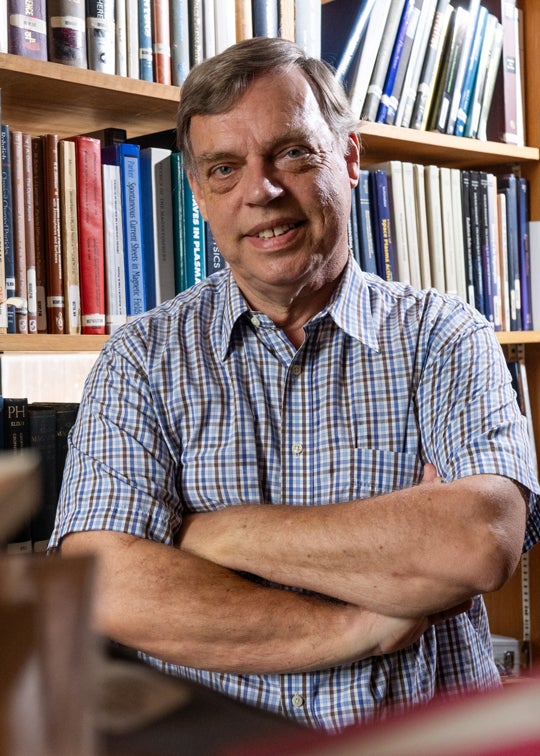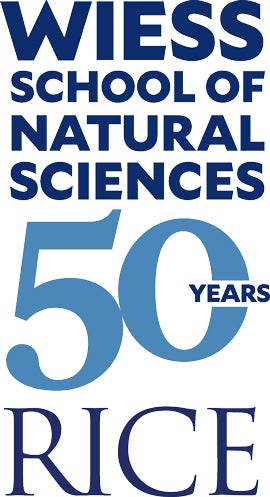Space is a cosmic laboratory for Matthew Baring, professor of physics and astronomy at Rice. Baring studies astronomical phenomena to better understand not just celestial objects but also the quantum effects they reveal.

One of Baring’s main focuses is on neutron stars, the dense nuclear remnants left behind after massive stars reach the end of their lifespan and explode. Some of these stars become pulsars, which spin rapidly and emit beams of electromagnetic radiation. A subset of pulsars, called magnetars, have magnetic fields about a thousand trillion times stronger than Earth’s, powerful enough to produce intense bursts of X-rays and gamma rays detectable from Earth-orbiting satellites, as well as steady, pulsating X-ray signals. These extreme environments offer an opportunity to test predictions from quantum physics that can’t be replicated on Earth.
Magnetar observations are especially useful for understanding quantum physics. One key prediction is that, in a sufficiently strong magnetic field, a single photon of light can convert into an electron-positron pair. Another theoretical result is that such a gamma ray can split into two photons, and a third is that different polarizations of light travel at slightly different speeds in the quantum vacuum. We can’t create such a strong field on Earth, Baring explained; however, magnetars have fields high enough that they push into a domain of quantum electrodynamics where these fundamental physics predictions become accessible to testing.
“One of our goals is to see if we can prove these predictions of exotic quantum theory using magnetars, even if we can’t yet probe them in the lab,” he said.
In that sense, magnetars’ powerful magnetic fields provide Baring with a high-tech laboratory in the cosmos. There are real obstacles, however, with working with such distant environs.
“One big challenge is getting an ensemble of data from different detection techniques to focus on one event, for example a giant flare in gamma rays from a magnetar,” Baring noted. “Another hurdle is to disentangle the pertinent quantum physics elements from a myriad of other environmental and geometrical influences in and near the magnetar.”
To interpret the extensive electromagnetic radiation data sets available for magnetar signals, Baring and his collaborators employ both formal theoretical modeling and computational simulations of radiation emission and interactions. These involve complicated geometries and a number of unknown physical parameters. Recently, Baring and his colleagues have turned to machine learning to address such modeling complexity. They use these AI tools to accelerate the simulation of cosmic phenomena.

“It takes a while to run our core astrophysics simulations, and machine learning allows us to train AI to create separate AI simulations based on our protocols,” Baring explained. “In our work, we need to sift through which parameters for modeling our data are most and least important for our simulations. I think that AI is going to provide a key to efficiently making that determination in the very near future.
“Another challenge is having people with the appropriate expertise to analyze data,” he observed. “As a Rice professor, I train budding scientists to think of problems not just as an astrophysicist but also in the fundamental physics sense. Now we also need people who understand AI. It’s not easy to assemble specialists who fit all three molds. People have a spectrum of talents; some more theoretical, others more focused on simulation or on observation. All these require different skill sets, so you need a large variety of abilities, and that is a challenge to acquire and to get to work cohesively as a team.”
That need for diverse talent is one reason Baring urges students to “pursue your dream, regardless of perceived outside influences. There’s no guarantee that you can precisely map out your career trajectory, but if you follow your heart and make sensible decisions with your head, and you are really invested in it by working hard, you are much more likely to deliver impactful contributions in your chosen field.”
To continue to empower students to pursue their dreams, it’s essential to maintain a community that values both innovation and connection, Baring said.
“Rice has distinguished itself by hiring faculty who are creative and original in their thinking, respectful, and connected to the broader community. We are under pressured times right now, and by continuing to have a stream of new people coming through, the Rice family culture and its contribution to our neighbors beyond the hedges will remain very strong.”
— Sophia Straus ’28

